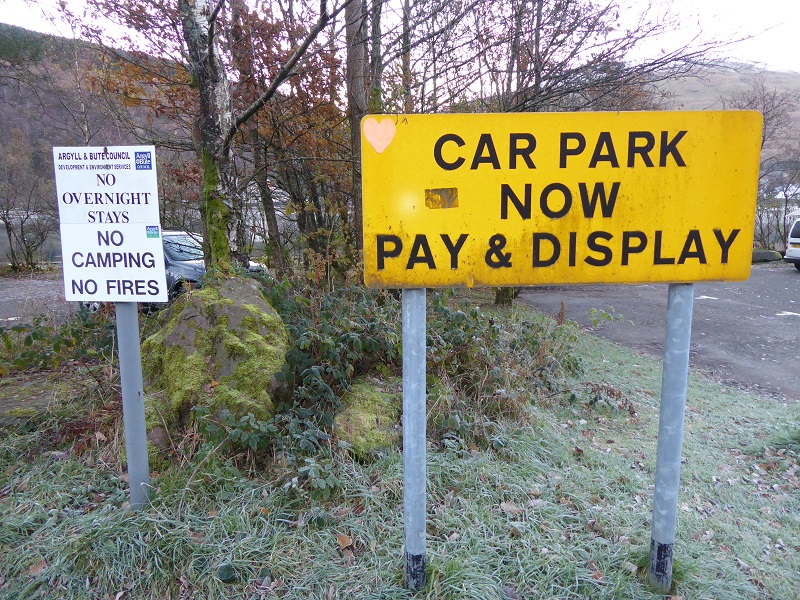
Following my piece on the rights of people to stay overnight in vehicles within the proposed camping management zones so long as their vehicle is on a public road, its verge or a layby provided by the Roads Authority (see here), I have had a speedy response from Argyll and Bute Council to my information request, which is much appreciated:
- The roads under Argyll and Bute Councils (ABC) control (as the Roads Authority) can be found at the following link https://www.argyll-bute.gov.uk/sites/default/files/public_list_of_roads_-_argyll_bute_council_area.pdf.
- Within the extent of the proposed by-law as defined on the plan provided, there are no clearways or planned clearways on ABC controlled roads.
- There are no provisions that prohibit overnight camping within laybys on ABC controlled roads within the plan provided.
- There are three ABC controlled off-street car parks within the proposed camping management zone. These are Luss Car Park, Luss and Glen Loin Car Parks 1 & 2, Arrochar. The Orders for all three car parks prohibit overnight camping.
What the response to questions 1,2 and 3 say is that there is no reason you should not stop overnight in your vehicle or caravan on any of the roads which are the responsibility of Argyll and Bute in the West Loch Lomond Management zone. I believe the LLTNPA now needs to produce maps with all the Argyll and Bute roads marked, as the PDF list supplied by Argyll and Bute is too complicated to follow (the roads within the West Loch Lomond management zone are listed on pages 29 and 42-44) along with Transport Scotland’s roads and laybys so people know where they can stay lawfully overnight in vehicles without fear of prosecution under the byelaws.
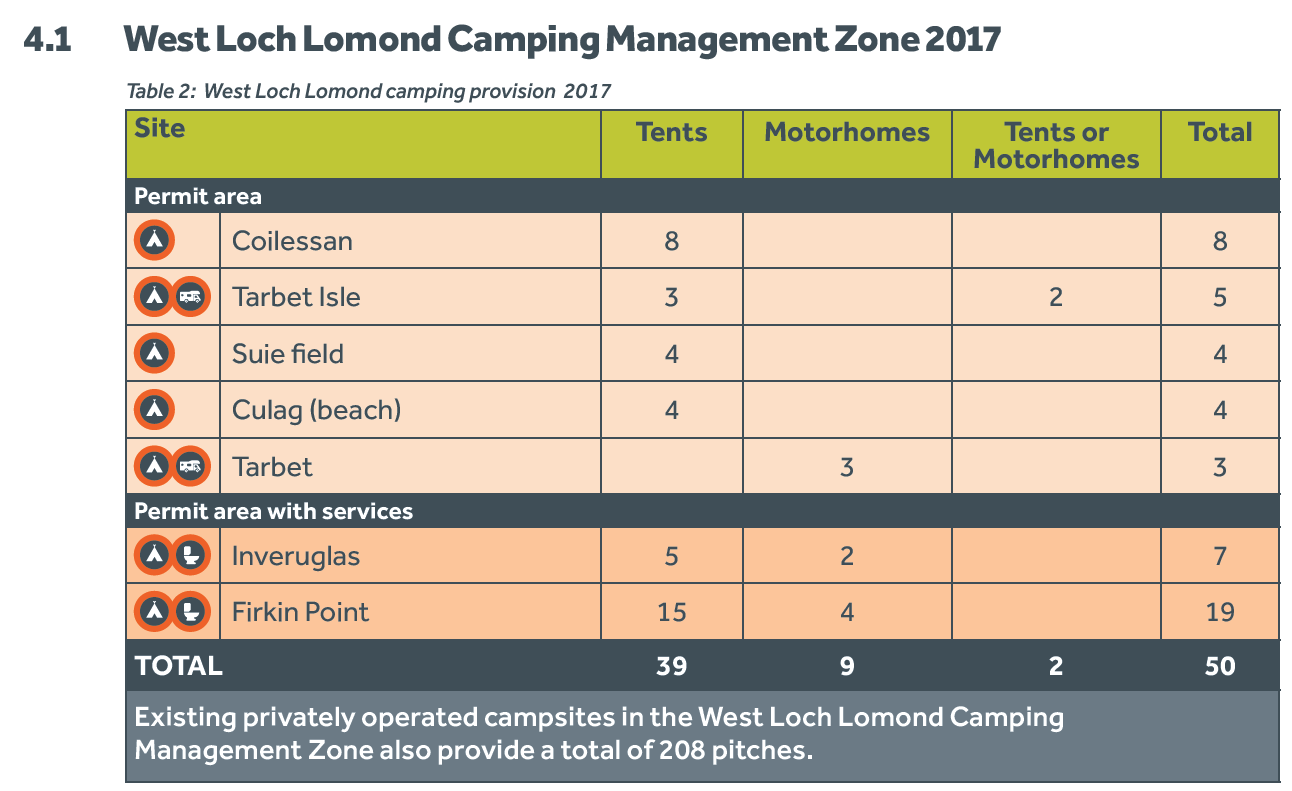
The LLTNPA has stated under FOI that it does not know how many places there are for campervans in existing campsites and, out of the 20 allowed for permits across all four management zones, there are only 9 on west Loch Lomond despite the dozens of campervans that stop off there. Its proposed signage is also totally unclear (see here) and if people don’t know where to stop, the safest thing to do (in terms of avoiding any risk of prosecution) is to stop off in one of the villages. What will predictably happen is that there will be an influx of campervans to villages which will add to the chaos which is already taking place at Luss (see here).
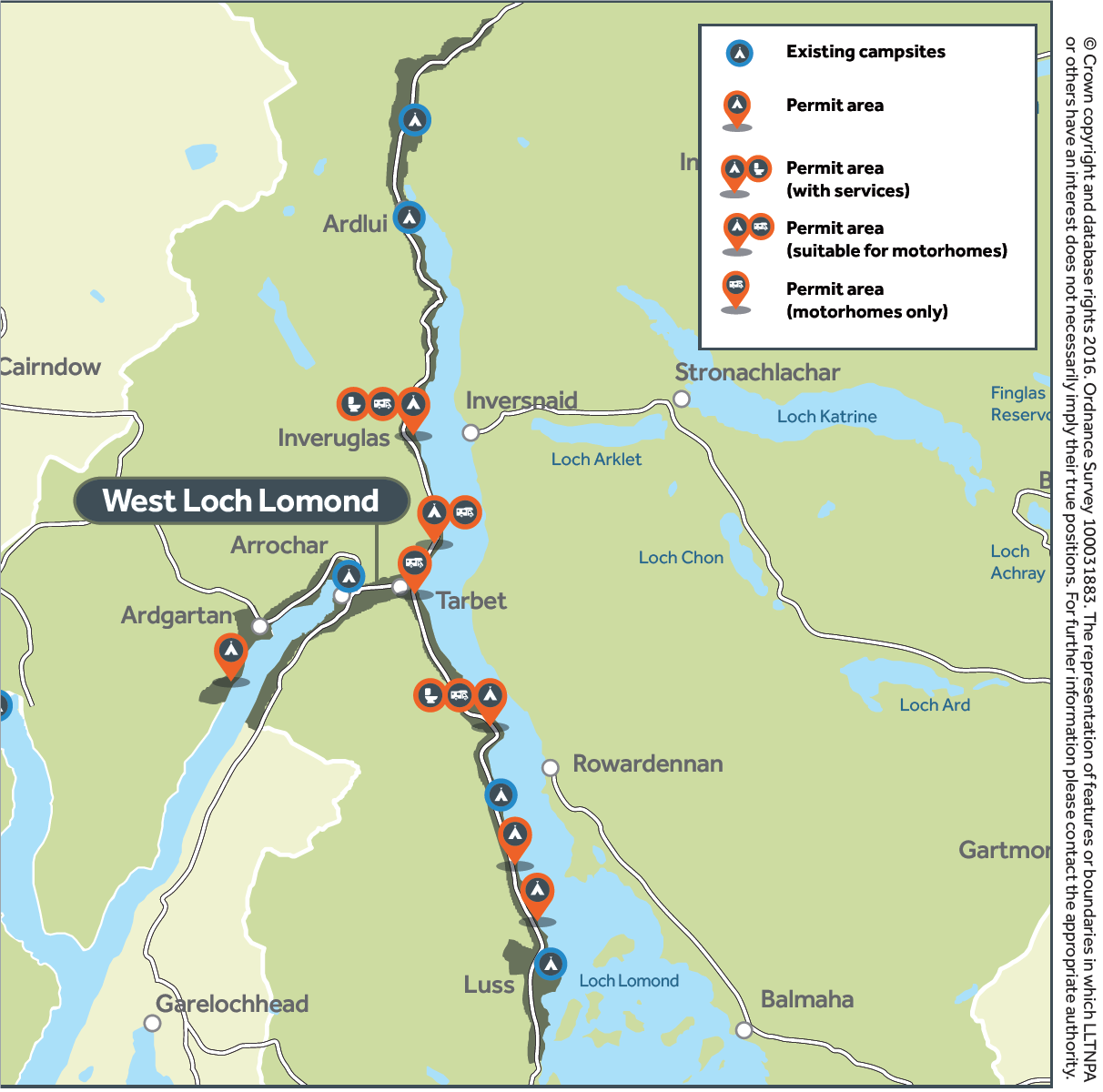
It does not require many predictive powers to forecast that people will ask why pay and go through the hassle of trying to obtain a permit to stop off at Inveruglas or Tarbert carparks (where the Park wants to install barriers) if you can simply go into Tarbert and park on the street? While most responsible campervanners would prefer never to do tha, if the Park carries on the way it is going, that predictably is what will happen. One wonders if Simon Jones, Director Conservation and Gordon Watson, Chief Executive, explained these consequences of the byelaws to the local community councils who they visited once more towards the end of last year? You only need to look at the map above, note the lack of campervan provision in Luss, and see the temptation of people to park up on the road verges round the village – its a nice place, off the main road and quiet – but it will simply add to the current chaos there. One wonders too if the LLTNPA has consulted any of the Local Authorities about the potential consequences of the byelaws to them as the Roads Authority?
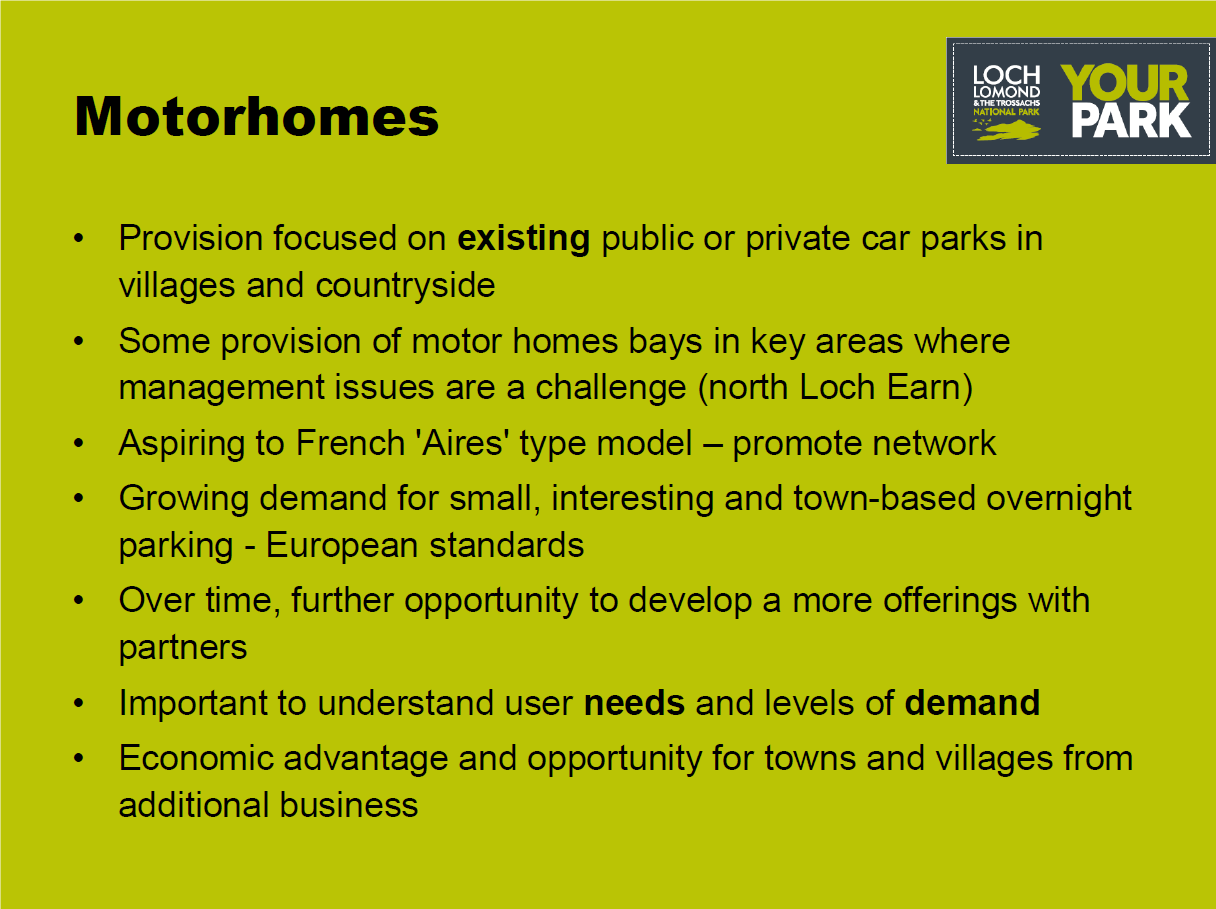
One reading of this slide is that the agenda of the LLTNPA was to try force campervans into carparks in the villages in order to take financial advantage of them. The question is have they asked local residents about this? The main concerns of many residents was people camping around settlements, a problem which could have easily been avoided without any byelaws, if the LLTNPA had used the access legislation (rather than the National Parks legislation) to exempt village settlements from camping rights. The LLTNPA has chosen instead to try and ban camping and campervanning outside the villages and consequences of road legislation is that this will force campervans into the villages. The LLTNPA though does not have to worry about that though because its the Roads Authorities which need to pick up the pieces.
Taking Arrochar as an example, where there is no provision for campervans and where the LLTNPA as planning authority was responsible for the loss of the lovely campsite at Ardgarten (it granted planning permission for it to be converted in luxury lodges), no-one unless desperate (e.g their car has broken down) would want to spend the night on the main road, the A83, or its verge. So where else could you stay? The obvious place is the FCS carpark at Ardgarten where there is a toilet and it would have been very easy to create places for campervans – the FCS however is on a mission to stop all overnight camping in its carparks. Apart from the village itself though, if you look at the Argyll and Bute list of roads, on page 43, however, you can see that Torpedo Range road (which leads to the pier in bottom left of the zone map below) is a designated public road and its also very little used. This is in part because the old Torpedo Range is a complete and utter eyesore and no-one wants to bring attention to this! (Yes you might ask, why on earth has the LLTNPA made such a fuss about campers when places like this blight the Park). Still, if you have driven up in your car from London, Mick Fowler style, to do a route on the Cobbler the next day and you plan to sleep in your vehicle, knowing you can stop here quite lawfully would be helpful and might provide an incentive not to park up in the village. There are many examples like this across the Park which will become clearer as the Roads Authorities make public what roads they manage and therefore where you can legally stay overnight in a vehicle.
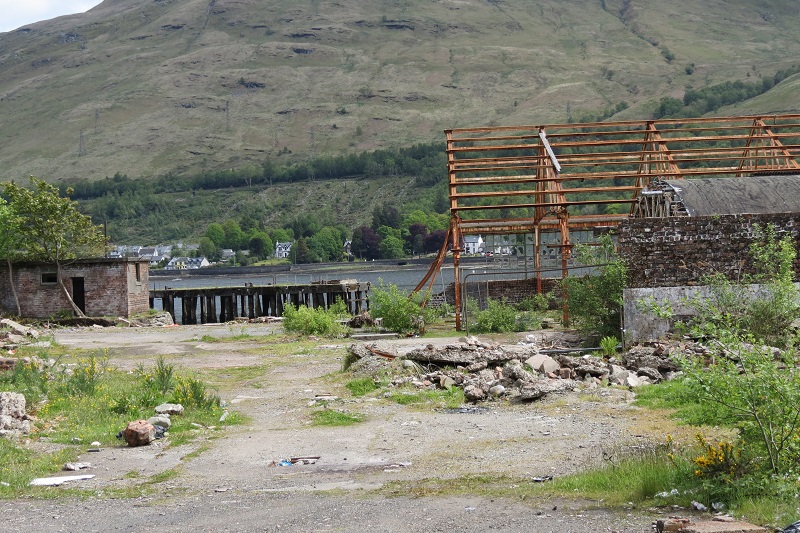
If you did just pull off the main road onto any of the side roads in the village, unlike campers, there would be no need to worry whether you were still in the management zone or not because as long as you were on a public road the staying overnight would be quite legal. Apply this analysis to all of the roads in the proposed management zones and you can see there are dozens of places you could stop off quite legally.
This is all fine if you need to stop overnight for safety reasons or you are just on your way somewhere else or have arrived after dark and are not bothered by the view. However, it does not address the fundamental issue, which is that most people in campervans want nice places to pull off the road. A large percentage of the people who have campervans, are just like campers (indeed many are ex-campers) they want a view and to experience nature. That’s what the National Park should be all about but unfortunately the LLTNPA has completely lost sight of this in its obsession of how to deal with a few irresponsible campers (and campervanners) and its failure to provide facilities.
